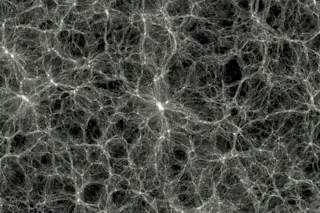In the annals of science, it will go down as a contest for the ages: the race to discover dark matter. This elusive substance has mystified us since the 1930s, when astronomers first realized galaxies needed some kind of invisible gravitational glue to hold them together. No one knew what it was, so the name dark matter stuck. Beggaring belief, the universe seems to hold more than five times as much dark matter as it does “normal” matter. This means it should literally lurk right under our noses, permeating and penetrating Earth as our solar system swings through our galaxy, which (like most massive galaxies) is brimming with the stuff.
Yet for all that seeming ubiquity, scientists know shockingly little about the universe’s dominant material. Dark matter could be made of one kind of particle or many. Those particles might be massively heavy or wispily light. We think it only ...















